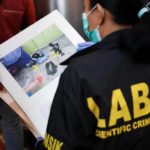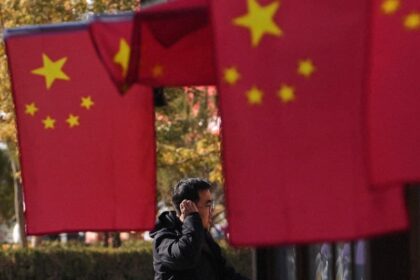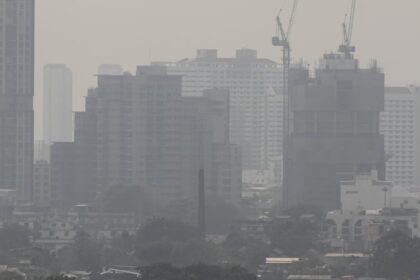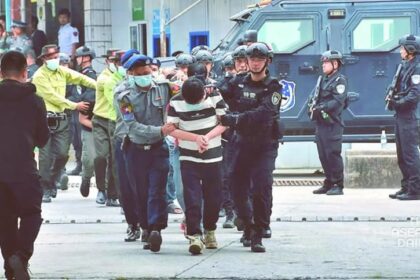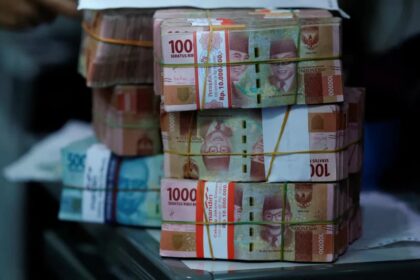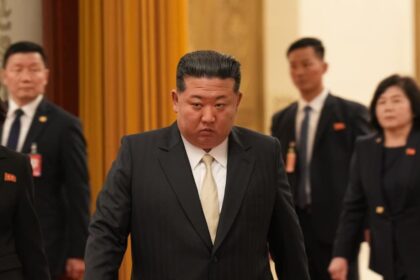Why the 2026 deadline matters now
The Philippines is preparing a concerted diplomatic push to conclude a Code of Conduct for the South China Sea by 2026, the year Manila chairs the Association of Southeast Asian Nations. Foreign Secretary Ma. Theresa Lazaro has signaled that the Philippines will propose more frequent negotiating rounds and tighter timelines to turn years of discussion into a workable agreement. The goal is straightforward. Set rules that reduce the risk of collisions, confrontations, and miscalculation in waters where Chinese claims overlap with the maritime zones of several Southeast Asian states.
- Why the 2026 deadline matters now
- What the code of conduct would do
- Sticking points that still block a deal
- Rising frictions at sea heighten the urgency
- How the Philippines plans to move the talks
- China’s calculus and the external powers debate
- What a credible code could contain
- What to watch between now and 2026
- At a Glance
The idea of a code is not new. ASEAN and China adopted a nonbinding Declaration on the Conduct of Parties in 2002, then started formal code negotiations years later. In 2023, both sides agreed to guidelines intended to accelerate talks, and by early 2025 officials reported a third reading of the draft text. Yet the most sensitive questions remain unsettled, and the temperature at sea has risen. The Philippines believes its chairmanship offers a rare opening to lock in an agreement that is practical, enforceable, and grounded in international law.
The code would not settle who owns islands and rocks or where maritime boundaries should be drawn. Those issues require separate legal or bilateral processes. A code is meant to prevent dangerous encounters, ease daily tensions, and create habits of cooperation. That aim has taken on new urgency as confrontations have grown more frequent around Second Thomas Shoal, Scarborough Shoal, and other hot spots.
What the code of conduct would do
A credible code would set clear rules for how coast guards, navies, and maritime militia operate near each other. It would define safe distances and maneuvers, establish protocols for hailing and communication, and curb risky actions such as ramming, blocking, or using water cannons and lasers. It could include hotlines among operational commanders, joint search and rescue procedures, and advance notifications for large patrols or exercises. It might also set guardrails for fisheries enforcement and lay out pathways for joint scientific research and environmental protection. In short, it would build a safer operating environment without touching sovereignty questions.
Two issues sit at the center of debate. The Philippines and several ASEAN states want a legally binding code with mechanisms to monitor behavior and address violations. China has resisted a binding instrument and is pressing to exclude outside militaries from joint drills with Southeast Asian states. Beijing also prefers to limit oil and gas projects to deals among regional partners, which would complicate existing arrangements with companies from outside the region. These differences go to the heart of influence and deterrence in a waterway that carries a significant share of global trade.
Not a peace treaty
A code is a risk reduction tool. It will not draw maritime boundaries or resolve overlapping claims. The United Nations Convention on the Law of the Sea (UNCLOS) remains the legal baseline for exclusive economic zones (EEZs) and rights at sea. The 2016 arbitral award in the case brought by the Philippines struck down historic rights claims that cover most of the South China Sea, but China rejects that ruling. A practical code can still improve safety and predictability, even as legal disputes persist.
Sticking points that still block a deal
Legal status is the core dividing line. ASEAN claimants, especially the Philippines and Vietnam, seek language that is binding with real teeth. That means oversight, reporting, and agreed steps when rules are broken. China favors flexible commitments and is wary of any enforcement design that would constrain its operational choices at sea. The wording around compliance and dispute handling will determine whether the code becomes a reliable reference or a paper promise.
Geographic scope is also unresolved. Should the code cover the entire South China Sea where claims overlap, or only select areas? Claimants want a comprehensive map of coverage, since incidents cluster across several zones. China prefers a narrower scope. Definition matters because it guides where rules apply and where they do not.
The role of outside powers is another hard question. China wants ASEAN members to refrain from joint military drills with partners like the United States, Japan, Australia, and others. Several Southeast Asian states say that cooperation with security partners can help stabilize the situation and build capacity. Freedom of navigation and overflight, guaranteed under UNCLOS, is a principle many in the region want reflected in any final document.
Greg Poling, director of the Asia Maritime Transparency Initiative at the Center for Strategic and International Studies, captured ASEAN’s internal strains succinctly.
ASEAN remains quite divided, with non-claimants unwilling to risk China’s displeasure. This leaves the claimants, the Philippines and Vietnam in particular, often standing alone to hold the line in negotiations with China.
History explains some of that caution. In 2012, the bloc could not agree on a joint statement during the Cambodian chairmanship after a dispute over references to the South China Sea. ASEAN also refrained from collectively referencing the 2016 arbitration award. Divergent stakes and exposure to Chinese pressure complicate efforts to speak with one voice, which in turn slows the talks.
Rising frictions at sea heighten the urgency
Events at sea have made a safety code more pressing. In 2024 and early 2025, Chinese coast guard, navy, and maritime militia units surged in numbers across the West Philippine Sea, which is the Philippines’ name for waters within its EEZ. Confrontations around Second Thomas Shoal included blocking maneuvers, ramming, and the use of water cannons against Philippine resupply missions to personnel stationed on the grounded BRP Sierra Madre. Chinese personnel also boarded a Philippine boat during one clash and damaged equipment. China issued new coordinates for baselines around Scarborough Shoal and adopted rules that could enable detention of foreign crews. The shoal known as Second Thomas is less than 370 kilometers from Palawan in the Philippines, and about 1111 kilometers from China’s Hainan Island, highlighting the geographic asymmetry.
Manila has responded with a comprehensive archipelagic defense concept, accelerated military modernization, and deeper cooperation with partners. The United States deployed the Typhon missile system to the Philippines, and exercises with Australia and Japan expanded. Vietnam meanwhile stepped up construction on its features in the Spratlys, adding to the complex security picture. China conducted military drills and blockades in response to Philippine resupply missions and asserted patrols around Scarborough Shoal.
U.S. Deputy Secretary of State Kurt Campbell urged a reduction of tensions while pointing to incidents affecting Philippine vessels.
We’re looking for China to cease provocative activities.
ASEAN’s top official has also sounded the alarm. ASEAN Secretary General Kao Kim Hourn emphasized the need for restraint amid escalating encounters.
We cannot deny the fact that the situation continues to escalate.
In April 2025, the Philippine Navy tracked the Chinese carrier Shandong near Philippine waters and monitored a Chinese electronic surveillance ship off Luzon as Manila prepared for major exercises with partners. Beijing criticized these drills as harmful to regional stability. Filipino leaders say they seek dialogue and a rules based solution, but will assert their rights at sea.
How the Philippines plans to move the talks
Manila’s plan as incoming ASEAN chair is to turn political intent into steady technical work. That means more frequent negotiating sessions, empowered working groups, and strict calendars to advance the text on scope, legal status, and incident management. The 2023 guidelines to accelerate talks created a framework for quicker iterations. Filipino diplomats want to operationalize that with clear tasking and deadlines, while preserving the principle of consensus inside ASEAN.
Officials in Manila are also weighing parallel steps to align the positions of claimant states. Greater coordination among the Philippines, Vietnam, Malaysia, and Brunei could reduce space for divide and rule tactics. Manila has argued that any code should be consistent with UNCLOS and should include practical measures such as hotlines and standard operating procedures for ships and aircraft in close proximity.
Jonathan Malaya, spokesperson for the Philippine National Security Council, captured both the frustration and the intent to keep going.
Talks have moved at a glacial pace, but we are still hopeful that the code can be finished during the Philippines’ chairmanship in 2026.
Even with a strong diplomatic push, Manila is unlikely to ease its defense preparations. The government has said that external partnerships will continue to deter coercion while diplomacy seeks a workable code.
China’s calculus and the external powers debate
Beijing seeks language that curbs the presence and activities of outside militaries in the South China Sea and favors regional only arrangements for energy projects. Several ASEAN states push back, arguing that lawful naval presence in international waters cannot be restricted and that capacity building with partners improves safety at sea. Any attempt to limit freedom of navigation or overflight would be out of step with UNCLOS and would face resistance from both regional and external actors.
China’s foreign minister has framed the issue as a regional matter. Wang Yi told reporters that Asia should not become a venue for rivalry among great powers.
Asia is not an arena for big power rivalry.
Chinese officials say code talks are moving forward, citing procedural milestones such as multiple readings of the draft. Analysts caution that these steps do not resolve the core gaps on enforcement, scope, legal status, and the role of external partners. With an extensive coast guard, a large maritime militia, and fortified outposts on reclaimed features, China can operate with confidence under the status quo. A code that lacks binding rules would change little in practice.
What a credible code could contain
Concrete measures can turn a general pledge into safer daily conduct. A realistic package could include: minimum separation distances for vessels and aircraft, common radio hailing procedures, and rules that prohibit dangerous maneuvers such as ramming or shouldering. It could ban the use of high pressure water cannons and blinding lasers, codify escort protocols for civilian resupply missions, and require advanced notification for large scale exercises or law enforcement operations near disputed features. It should also expand hotlines between operational commanders and ensure immediate communication after any incident.
Compliance is the make or break element. A joint committee with ASEAN and Chinese members could log incidents, verify facts, and publish routine safety bulletins. Regular public reporting would create transparency and pressure for better behavior. Where violations occur, the committee could recommend remediation steps including apologies, compensation for damaged equipment, or restorative measures such as joint training on safer practices. These are practical tools that lower risk without implying any change to claims.
Negotiators might also consider a modular approach. Start with an incident prevention and communications chapter where common ground is strongest. Add chapters on fisheries cooperation, search and rescue, and science as confidence grows. Some ASEAN experts have proposed a broader parallel instrument on maritime engagements across Southeast Asian waters, open to all active states. An ASEAN first agreement of that kind, later opened for accession, could complement a South China Sea code and reinforce predictable conduct across the wider region.
What to watch between now and 2026
Process and behavior will both tell the story. On process, look for steady meetings of the ASEAN China senior officials group that implements the 2002 declaration, and for working groups to narrow gaps on scope, legal status, and compliance. Malaysia’s 2025 ASEAN chairmanship will be a key waypoint. Manila’s chairmanship the following year is when ASEAN and China set their target for completion. Any release of consolidated draft language on enforcement or hotlines would be a sign of traction.
On behavior, watch the tempo and tone of encounters near Second Thomas Shoal, Scarborough Shoal, and Sabina Shoal. Reduced use of ramming and water cannons, and more predictable communications at sea, would suggest emerging norms even ahead of a signed code. Energy exploration decisions by Southeast Asian states and the response they elicit will also test whether rules can be agreed that are consistent with UNCLOS. If incidents intensify, political space for compromise will narrow.
At a Glance
- The Philippines plans to press for a South China Sea Code of Conduct by 2026 during its ASEAN chairmanship.
- Talks have dragged since the 2002 declaration, with guidelines adopted in 2023 to speed the process.
- Key disputes include legal status, geographic scope, enforcement design, and the role of external partners.
- China resists a binding code and seeks to limit joint drills with non Southeast Asian states and energy deals with outside companies.
- Rising incidents, including water cannon use and ramming against Philippine missions, sharpen the need for risk reduction rules.
- ASEAN officials call for restraint while the Philippines strengthens defense ties with the United States, Japan, and Australia.
- A credible code would set incident prevention rules, hotlines, and compliance mechanisms consistent with UNCLOS.
- Frequent meetings in 2025 and 2026, plus steadier conduct at sea, will indicate whether the target is within reach.




